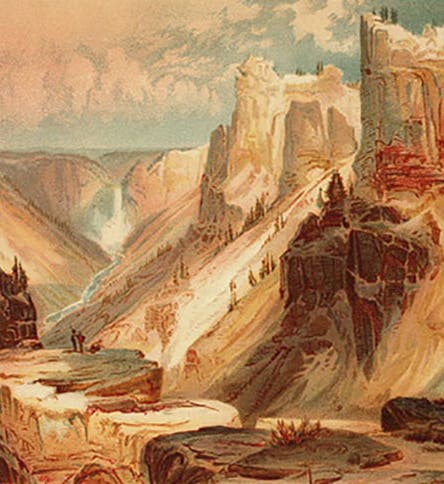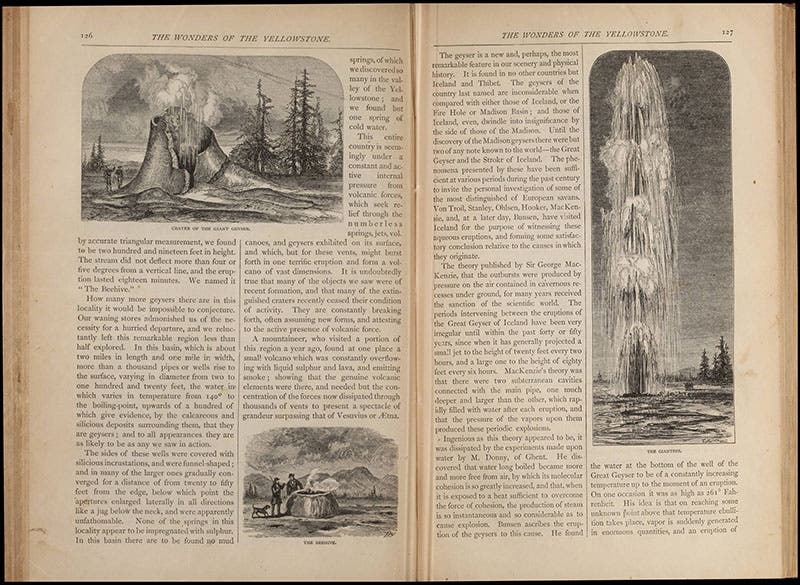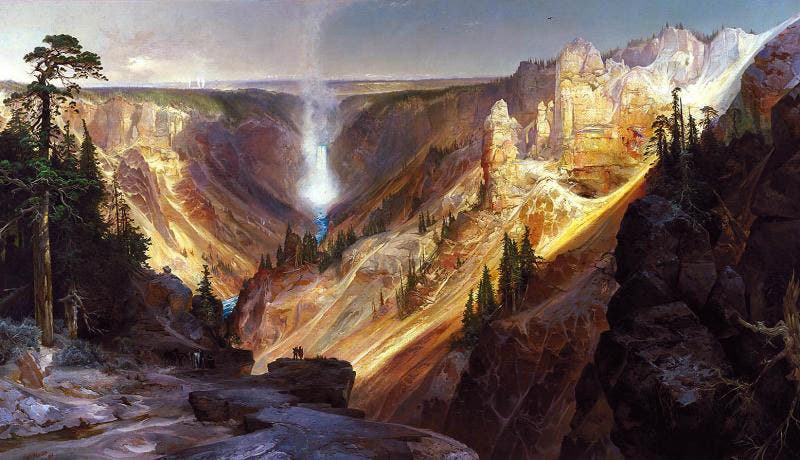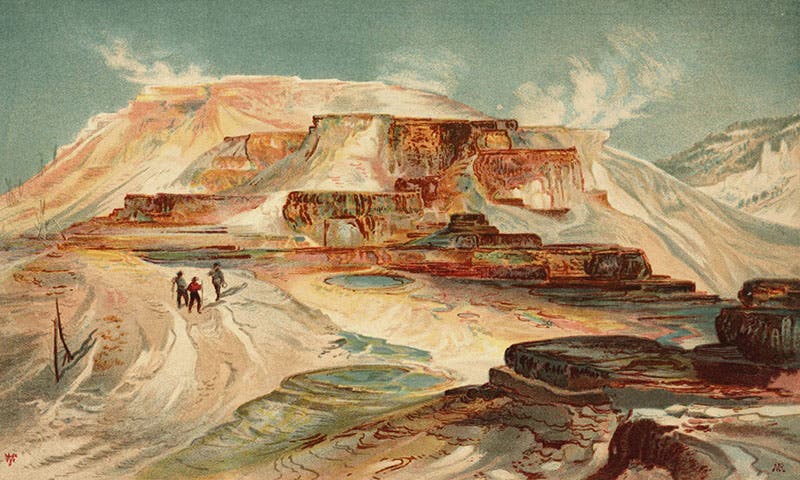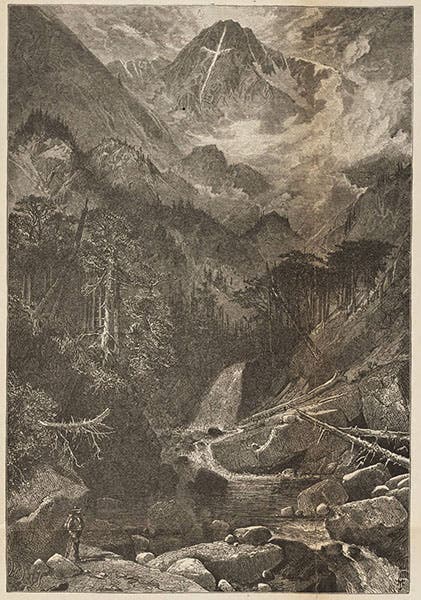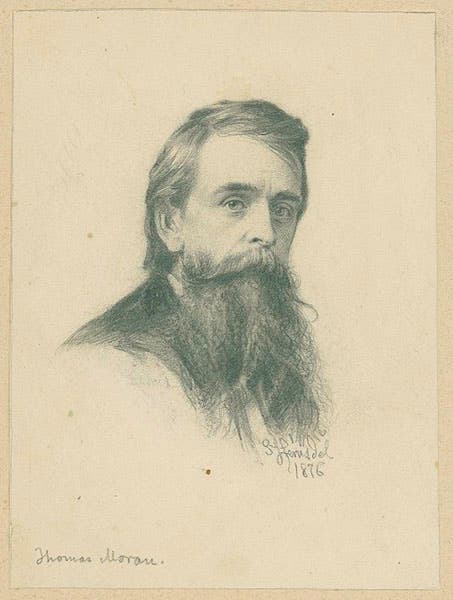Scientist of the Day - Thomas Moran
Thomas Moran, an American painter, was born Feb. 12, 1837. Moran came to Philadelphia from England as a boy and apprenticed as a wood engraver. In 1870, he had moved up to the new Scribner's Monthly, designing rather than cutting engravings, when Nathaniel Langford submitted a manuscript to the journal about a recent expedition to the Yellowstone region of Wyoming. Full of hard-to-believe tales about steaming geysers, boiling mud pots, and an incredible valley surmounted by a waterfall, the article was just what the journal needed to bolster circulation, and Moran was called upon to design 14 wood engravings of wonders he had never seen. They were not bad images, although wood engravings are not really suited for landscapes. We show here a page opening of the magazine for June 1871, where you can three Yellowstone geysers (that is the Giantess on the right), all signed "TM", for Thomas Moran (second image).
Ferdinand Vandeveer Hayden, about to lead his Geological Survey of the Territories to Yellowstone for the 1871 season and impressed by the Scribner’s illustrations, invited Moran to come along as expedition artist, joining the photographer William Henry Jackson. Moran was finally in his element, ready to establish himself as one of the foremost artists of the Rocky Mountain school. He made sketches everywhere, which he later turned into gorgeous paintings, many of them large-scale. One of the most famous of these was a huge oil painting, The Grand Canyon of the Yellowstone, that he completed in 1872, after his first trip to Yellowstone. It is said that this painting, 12’ by 7’ in size, and displayed in the Capitol Building in Washington, convinced Congress to establish Yellowstone as the first national park in 1872. It is now on display in the National Museum of American Art at the Smithsonian (third image).
Hayden issued an annual report after every expedition season, and he often illustrated these with lithographs and wood engravings made after Moran paintings and Jackson photographs. The Twelfth Report, recounting the field work of 1878 and published in 1883, is especially rich in such illustrations, with at least four chromolithographs after Moran paintings and numerous wood engravings. The second volume of the two-volume report has two color frontispieces. One reproduces "The Grand Canyon of the Yellowstone" (first image). The other shows Mammoth Hot Springs at Yellowstone (fourth image). This would appear to be based on an oil painting now at the Los Angeles County Museum of Art.
We thought we would also show you one wood engraving made after a Moran painting, so you can see how a scenic wood engraving compares to a scenic lithograph. Jackson had made a famous photograph of a peak in the Sawatch range of the Colorado Rockies that was called "Mountain of the Holy Cross." Moran painted a canvas based on the photograph, in which he took great liberties with the landscape, but it you don't know that, it is quite an attractive composition. Hayden included a wood engraving of the painting in the Annual Report for 1874 (fifth image).
The original painting, Mountain of the Holy Cross, was quite a sensation; it was exhibited at the U.S. Centennial Exposition of 1876, where it won a medal. You can see it now at the Museum of the American West in Los Angeles.
There are many surviving photographs of Moran, who became quite renowned and lived to the age of 89, dying in 1926. We like this sketch of a younger Moran, made by his brother-in-law, Stephen Ferris, at the time of the Centennial Exposition in 1876 (sixth image). It is held by the National Museum of American History in Washington, D.C. We displayed both of the Hayden Annual Reports discussed here in our 2004 exhibition, Science Goes West, which unfortunately is not available online. Dr. William B. Ashworth, Jr., Consultant for the History of Science, Linda Hall Library and Associate Professor emeritus, Department of History, University of Missouri-Kansas City. Comments or corrections are welcome; please direct to ashworthw@umkc.edu.

